Ingredients
| A potato | A sharp knife | ||
| A set square can be useful |
Instructions
Making an arch is simple, you basically want to produce blocks of potato that are slightly wider at the top than the bottom.
So cut a few large chips out of the potato which are about 12-15mm square and as straight as possible.
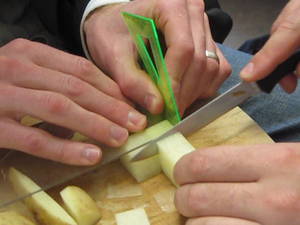 Although the blocks you make are tapered in one direction all the other corners should be right angles or your arch will be wonky, so using a set square, or something similar with a good right angle is useful to make the blocks the right shape.
Although the blocks you make are tapered in one direction all the other corners should be right angles or your arch will be wonky, so using a set square, or something similar with a good right angle is useful to make the blocks the right shape.
When you have made enough blocks to make a semi-circle try putting them together to make an arch. Does it stay up?
See how the fails if you abuse it, poke it and push it.
You often see arches on the top of pillars or walls. Have a go at modeling this by building your arch on the top of a couple of chips. Does it work?
Try making the blocks really really thin, does the arch still work?
Result
If you cut the blocks right the arch should be quite stable, unless you make it too thin when it will collapse.
If you build it on top of tall thin chips, you should find the chips are pushed outwards and it falls over.
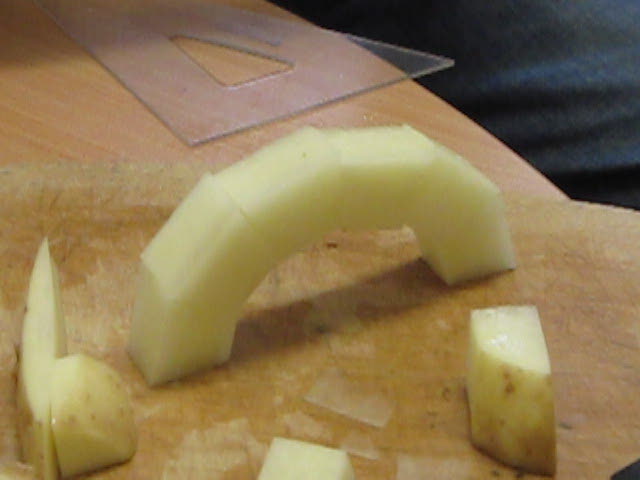
Explanation
Why does the Arch stay up?
The arch is made up of blocks, and will stand with nothing attaching them together. The central block stays up because it is wider at the top than the bottom, so to fall down it would have to push the neighboring blocks outwards, as long as these are held securely the central block can't fall down.
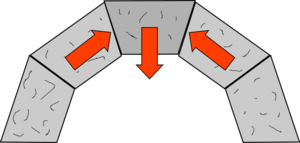 |
| The forces on one block in an arch |
So by a combination of this effect, friction and strong abutments holding the sides of the arch in, an arch can stay up for thousands of years.
How can an arch collapse?
There are two main ways, if the piers are not very secure they can get pushed outwards until the arch can't span the gap, or loading can cause parts of the arch to rotate and become unstable.
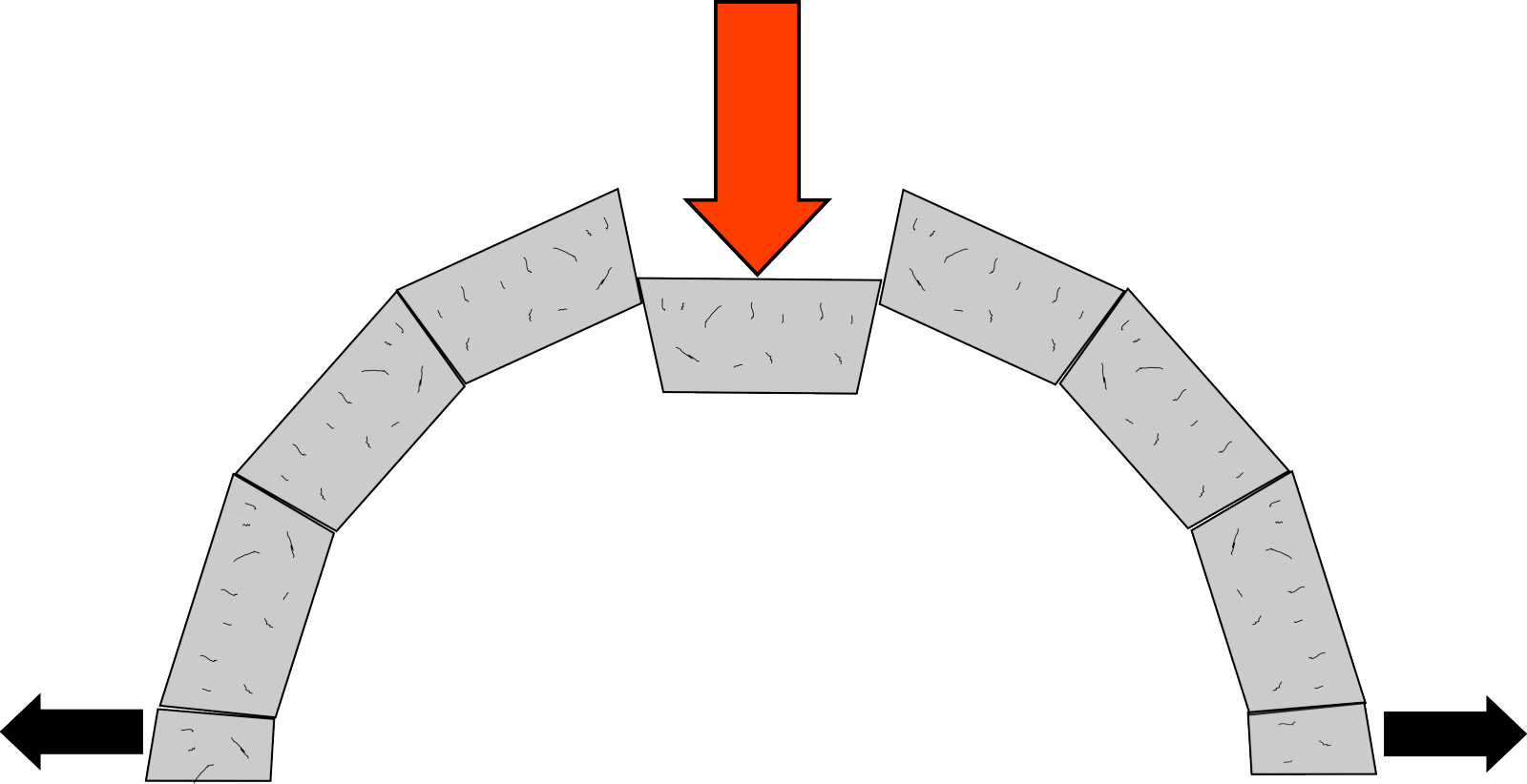 | 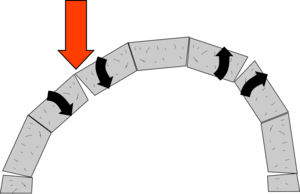 |
| One way for the arch to collapse is for the abutments to be pushed outwards | When the arch fails parts of it rotate which means it looses its shape |
The first of these can be combated by building really secure abutments at either side of the bridge, abut the second involves getting the shape of your arch correct.
One of the useful features of masonry structures like arches, is that because the stone is far stronger than it needs to be, if you scale up your structure it will still work, so if a master mason could build a model cathedral, the real one would stand up, and if you can build a model arch out of potato a full size one of stone like it would work too.
Why does the thin arch fall down?
In fact a semi-circle, is not the ideal shape for a perfect arch, it is too flat at the top and too curved at the edges, this means that there are rotational forces on some fo the blocks. These are not a problem for a chunky arch, as a thick arch is quite good at resisting these rotational forces, however when the arch gets too thin it just collapses.
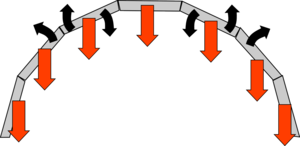 |
| Essentially the arch's own weight twists some regions of the arch, and if the arch is very thin it can't resist these twists and the arch falls down. |
What is the perfect shape for an arch?
That will depend on your arch, but Robert Hooke discovered a very useful analogy, the perfect arch has no rotational forces on any of the blocks. A hanging chain has very similar forces to an arch, but in tension rather than compression, and a chain link will move until there are no overall rotational forces on it, so a hanging chain is always in pure tension.
Hooke worked out that if you make an arch in the shape of an inverted chain there will be no rotational forces on it, and it will be stable, even if it is very thin, for a uniform chain this shape is called a catenary. If the arch has a different weight distribution, it should be the shape of the chain of this weight distribution.
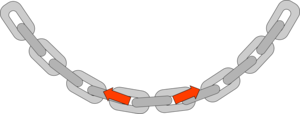 | 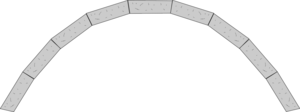 |
| The forces on each link in a chain are similar to those on an arch but in the opposite direction | An arch in the shape of an inverted chain will remain stable even if it is very thin. |
Why can't you build an arch on narrow pillars?
An arch thrusts sideways on its abutments, this is fine if the abutments are the ground, but if it is built on long narrow pillars, like a cathedral roof, there are large forces trying to push the pillars or walls over.
One solution is to make the walls very thick forming buttresses which can resist the sideways forces.
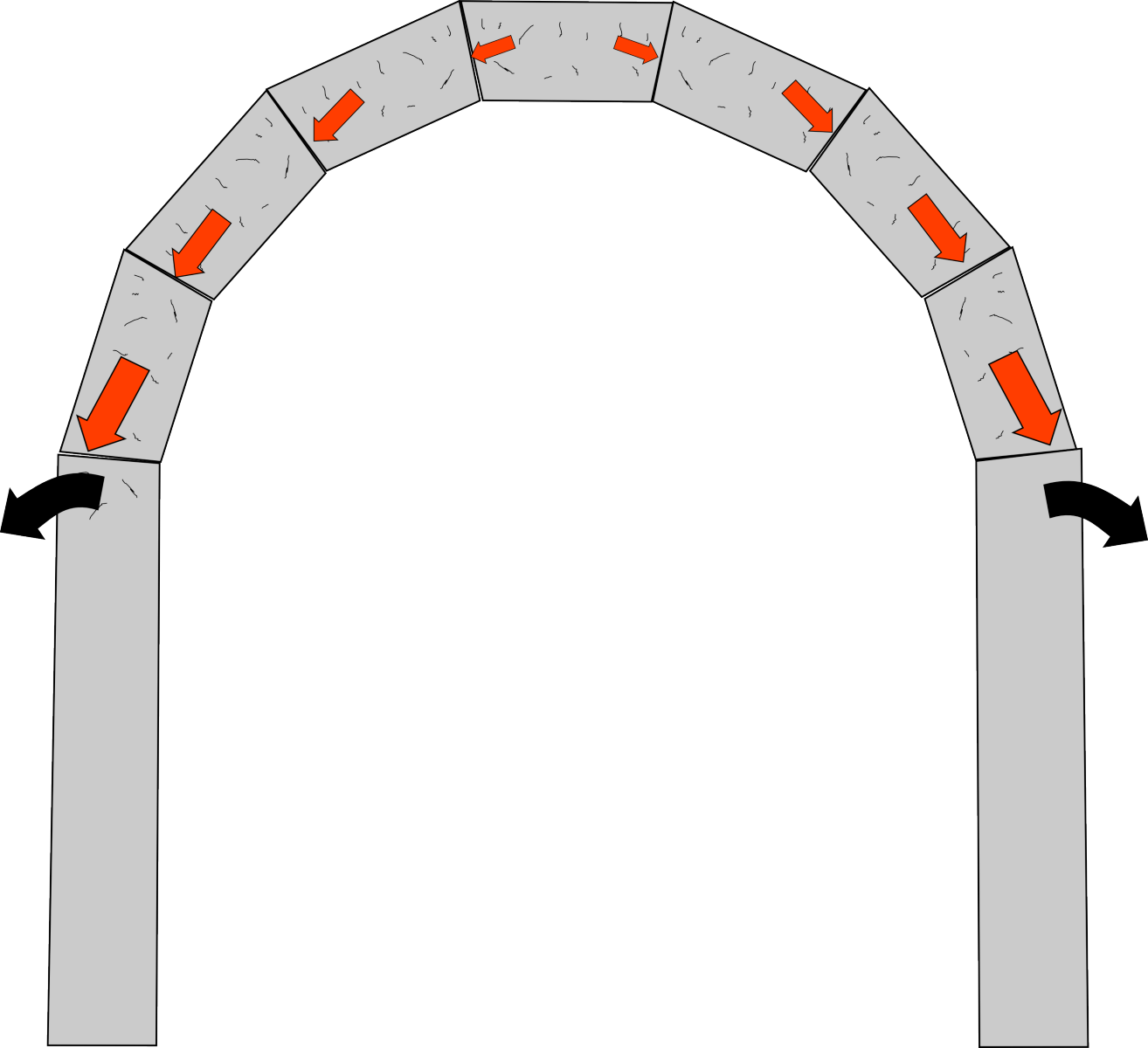 | 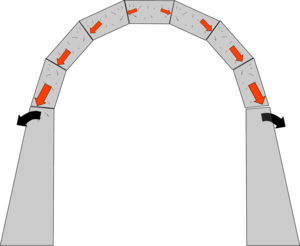 |
| If you build an arch on thin pillars, the outward thrust is easily enough to push the pillars over. | One solution is to build very wide walls called buttresses. |
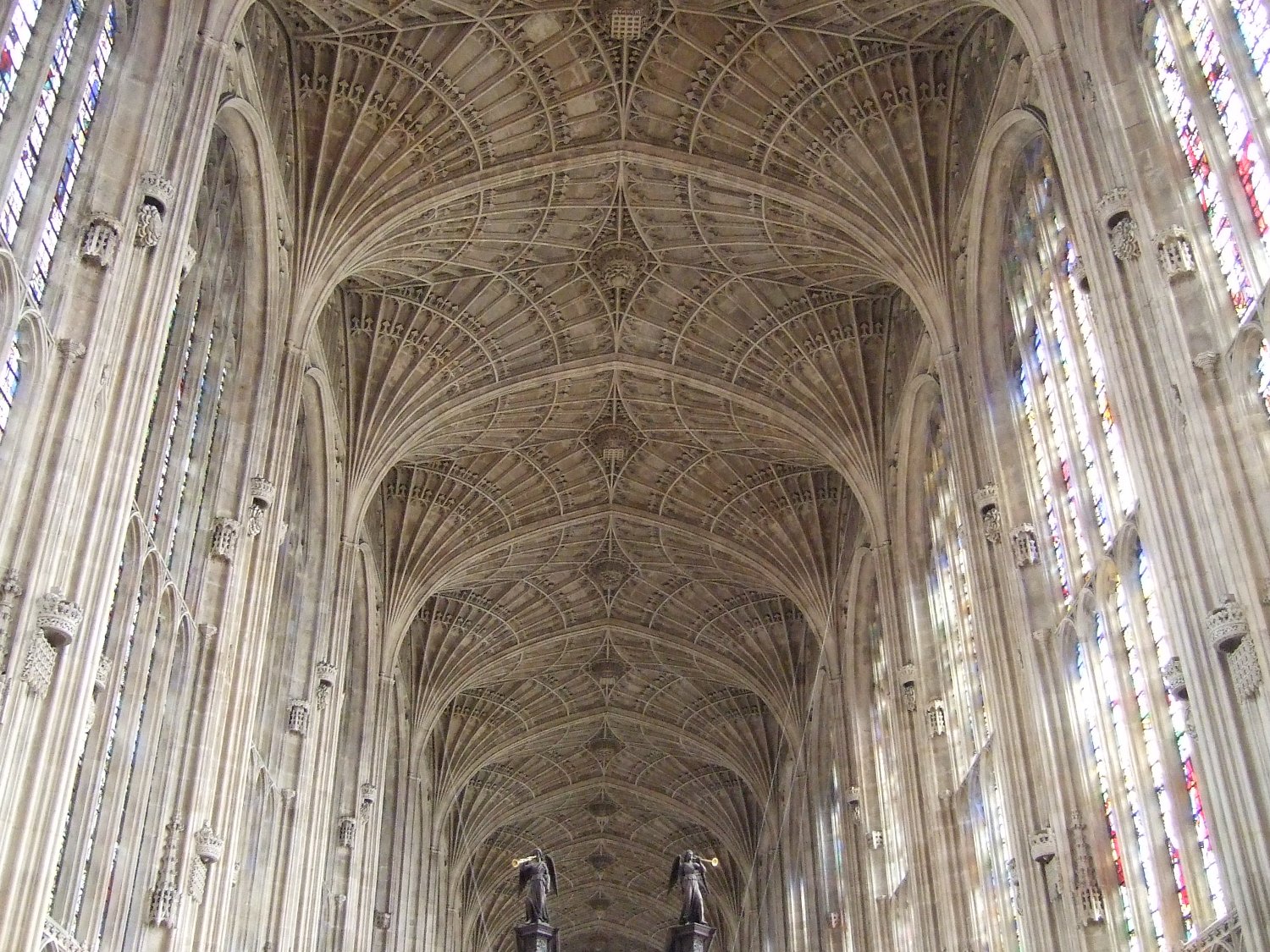 | 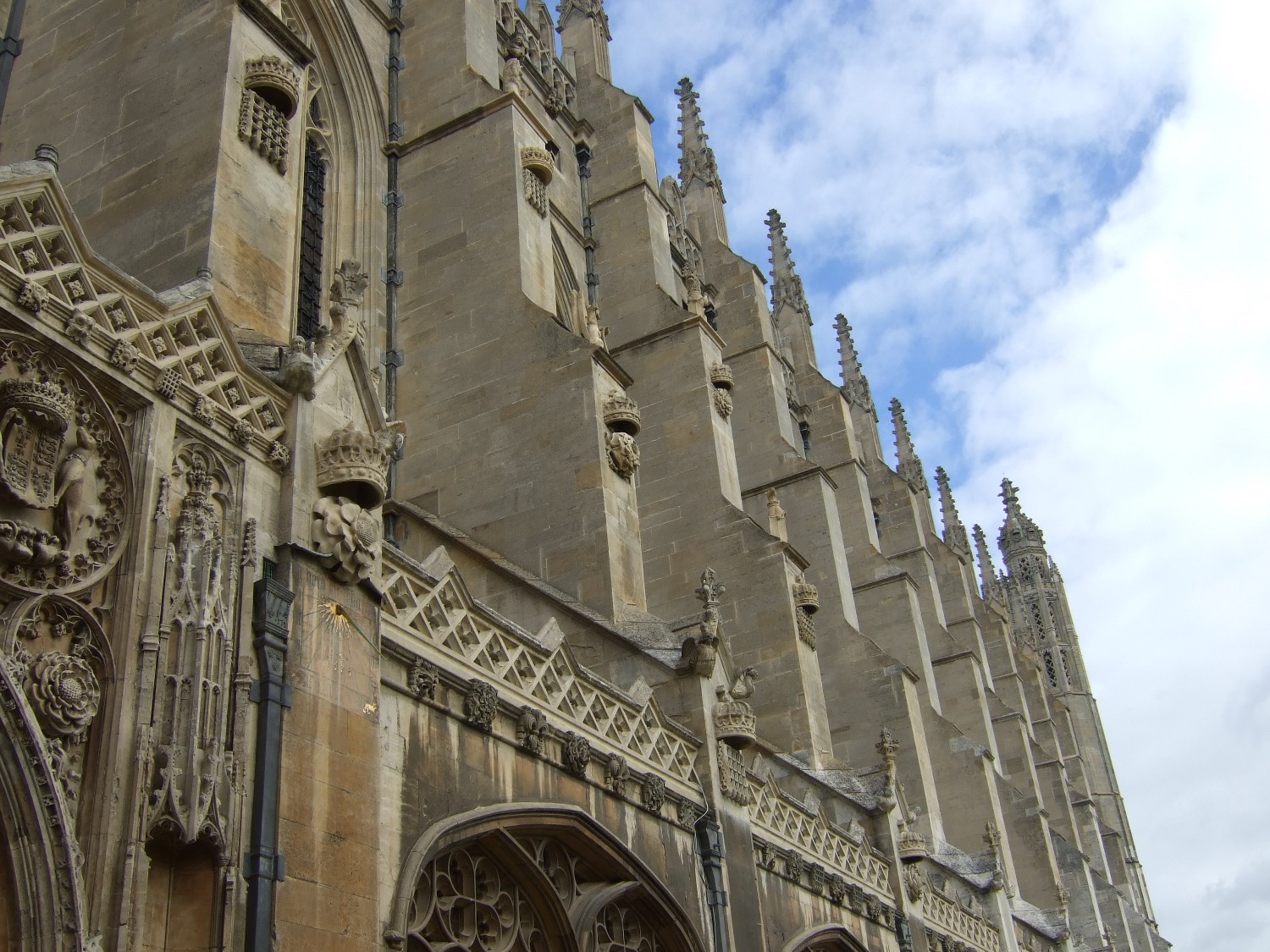 |
| The roof of Kings College Chapel is essentially a large arch which pushes sideways on its supporting walls. | To counteract this force the walls have to be built very thick. |
Another more impressive, elegant (and more expensive) solution was to build arches on the side of the main arch. These push inwards counteracting the outward thrust.
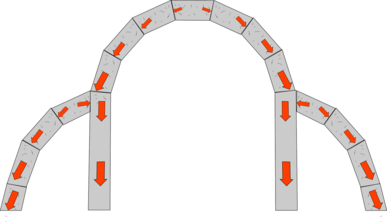 | 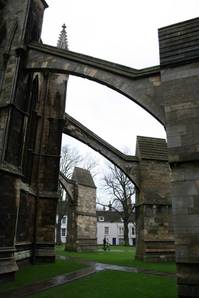 |
| Another solution is to build a partial arch on the side of the main one which pushes inwards on the main arch. This is called a flying buttress. | Flying buttresses at Lincoln cathedral |










Comments
Fascinating! It answered my
Fascinating! It answered my lifelong question about how the center block stays in place.
Add a comment